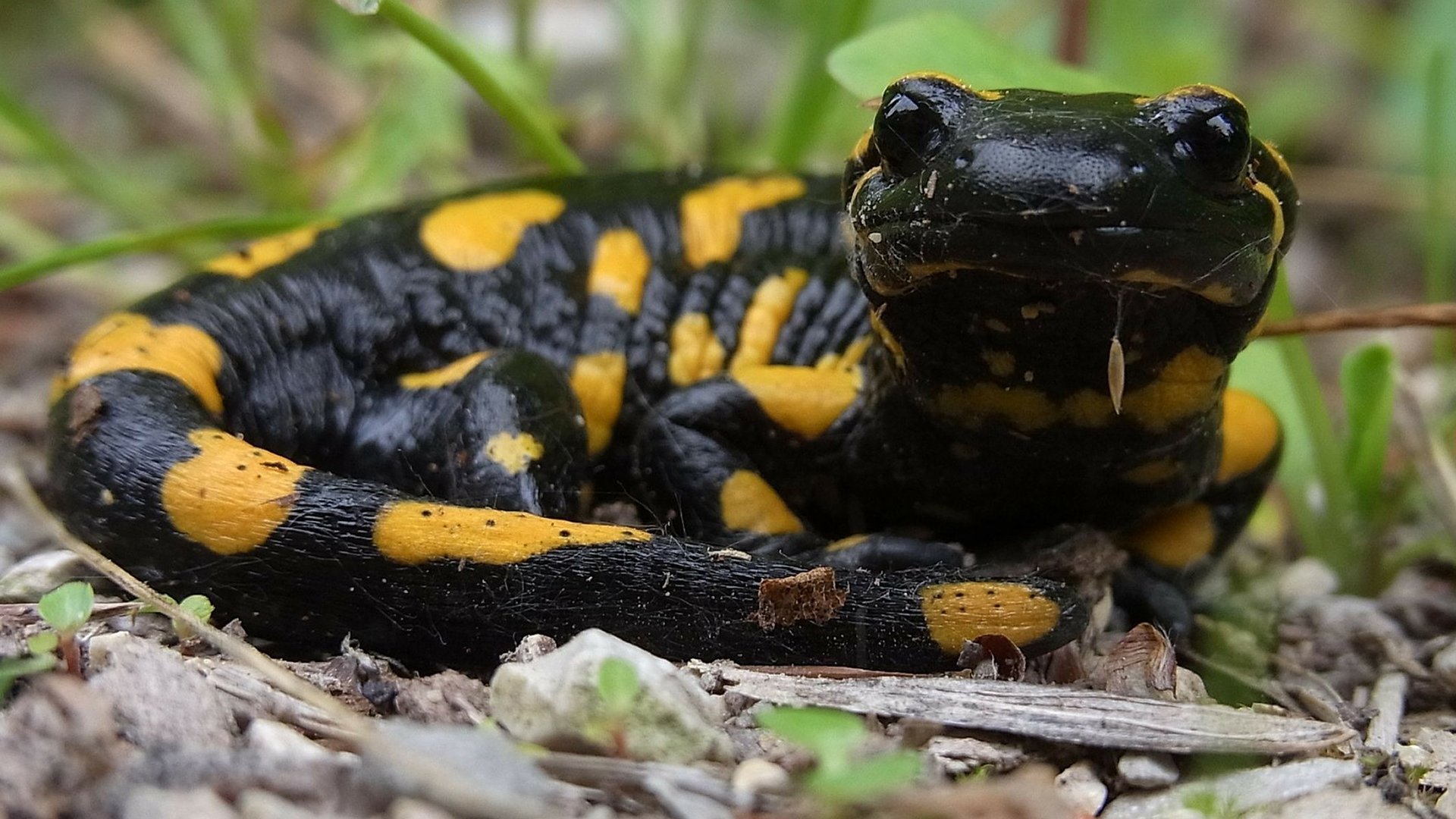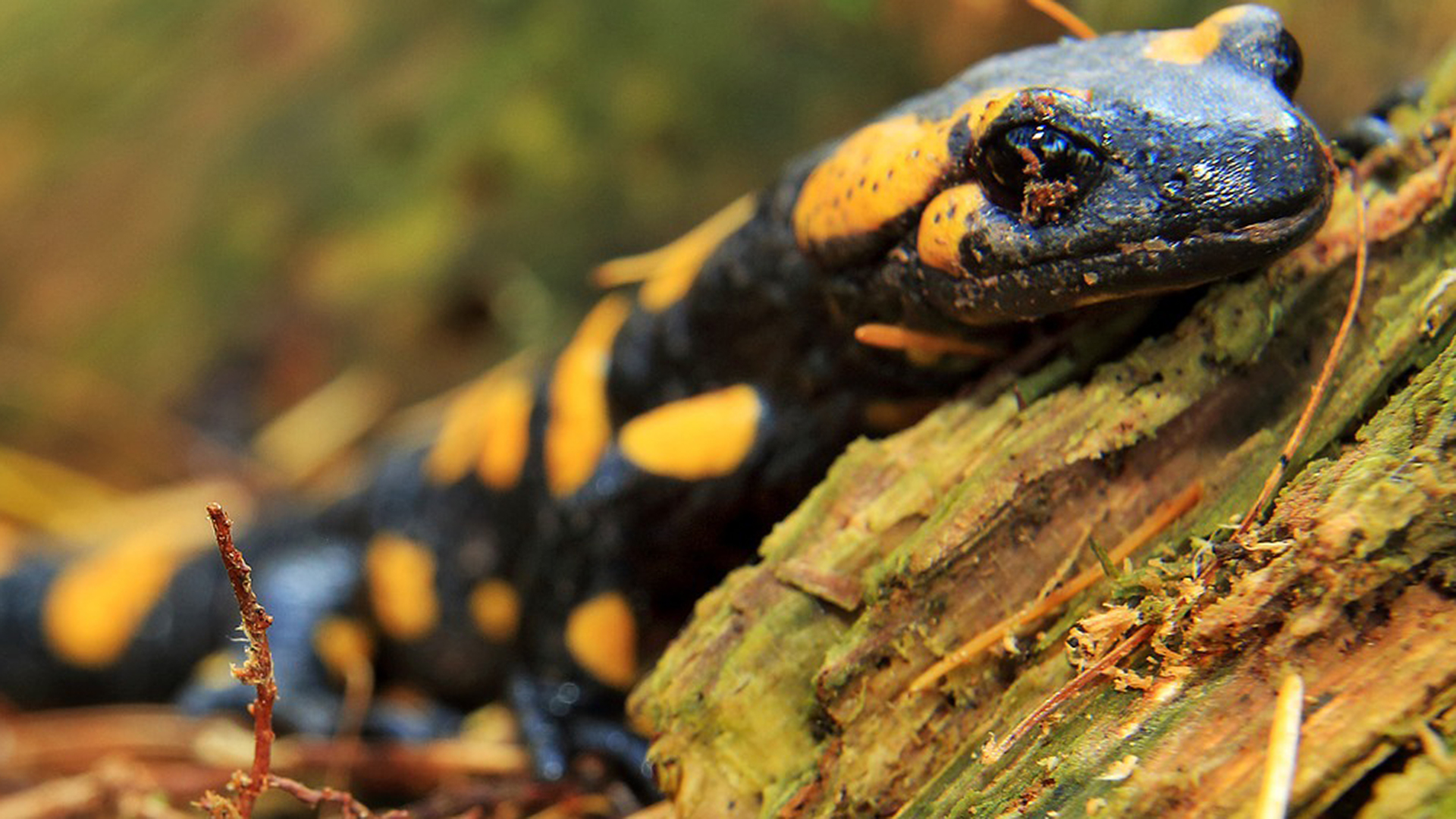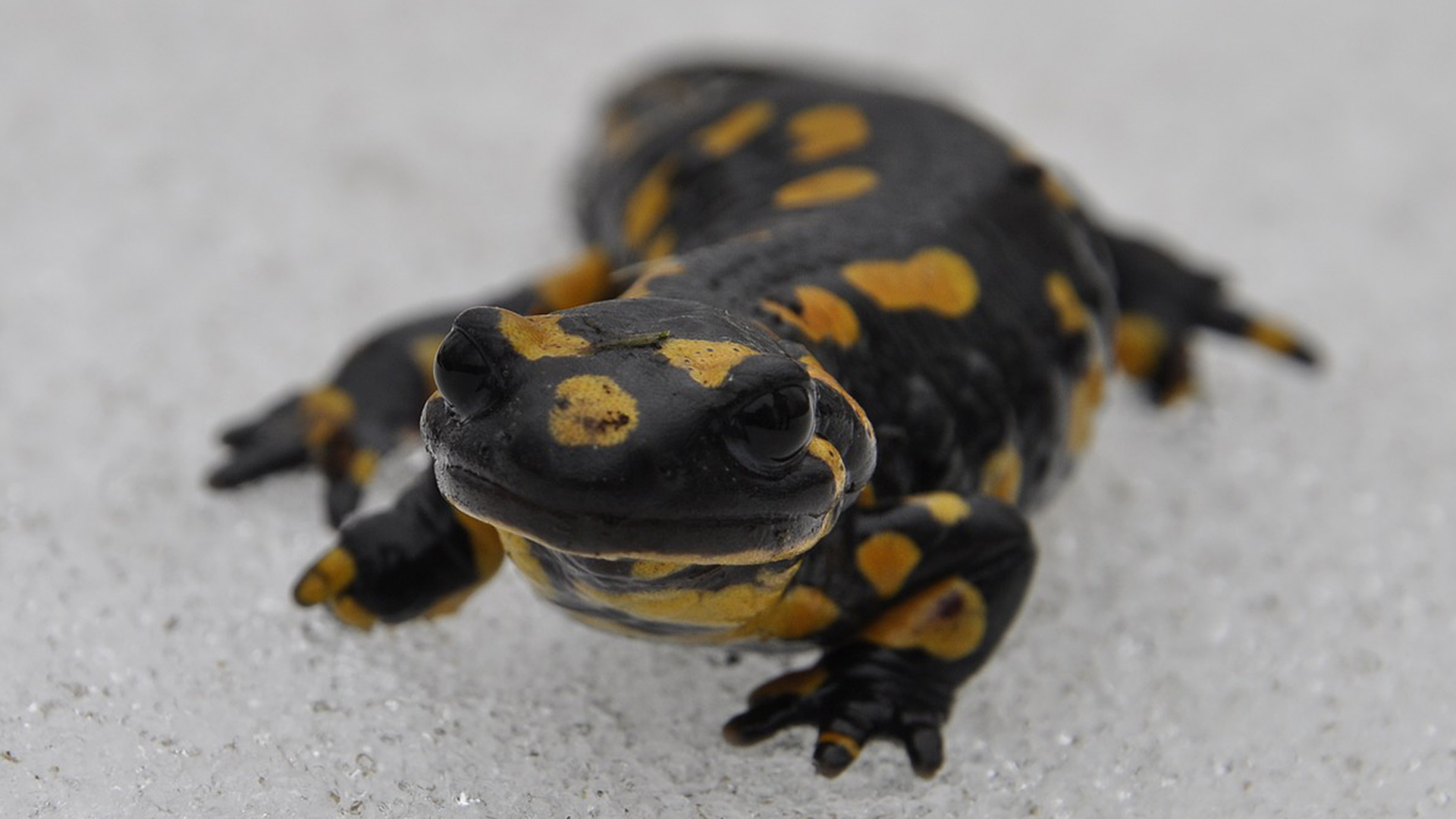
In addition to yellow splotches and stripes, tiger salamanders also live up to their name with a voracious appetite, feeding on insects, worms, frogs, and sometimes even other salamanders.
The tiger salamander has the greatest range of any salamander in North America, extending through southern Canada down to northern Mexico, and throughout the eastern U.S. They are distinguished by their heavy bodies with yellow splotches. The tiger salamander is one of the largest salamanders in North America. They have a very blunt snout, and are voracious predators. They live underground most of the year, so although they are widespread, we rarely see them. They feed on a variety of prey, including worms, slugs, and insects. Tiger salamanders begin their life in the water. The female lays eggs in a nearby pond, and the larval salamanders actually use gills to breathe in the water. Adult salamanders lose their gills and gain lungs to breathe air! Like other amphibians, the tiger salamander is actually poisonous! They have a poisonous substance they secrete that tastes very bad to predators.

Tiger salamanders, where found, can be one of the most prevalent vertebrates, although they are seldom seen because they spend most of their time underground.
Hilaire
Although common, tiger salamanders, and other amphibians, are affected by deforestation, habitat loss, and especially pollution. Their dependence on water makes them extremely susceptible to polluted waters.
North America
Forests, grasslands, marshes
7–14 inches, | 4 ounces
Insects, worms, slugs, sometimes smaller amphibians
Fish eat eggs and larval salamanders
Poison
Up to 100 eggs per clutch
Least Concern
10–16 years


